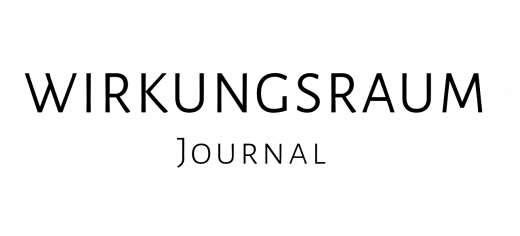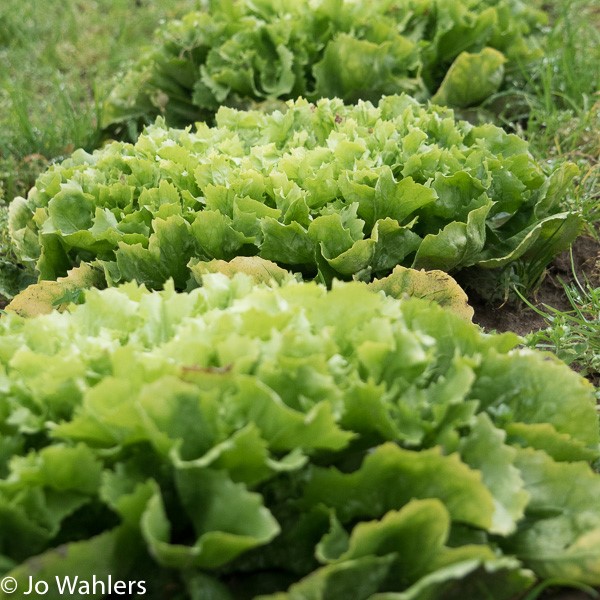Wir denken bei Raum meist an bebaute Fläche. An unser Zuhause, an Bürogebäude oder vielleicht auch noch an öffentliche Orte, wie einen Marktplatz oder den Bahnhof. Aber unter all diesen bebauten Flächen ist eines: der Erdboden. Ich stelle es mir vor, wie ein Puzzle: Stück für Stück wird der freie Boden verteilt und zugepuzzelt. Mit Beton, Asphalt und auch mit Landwirtschaft. Letztere lässt den Boden immerhin frei und nutzt die Erde, ohne sie zuzubauen.
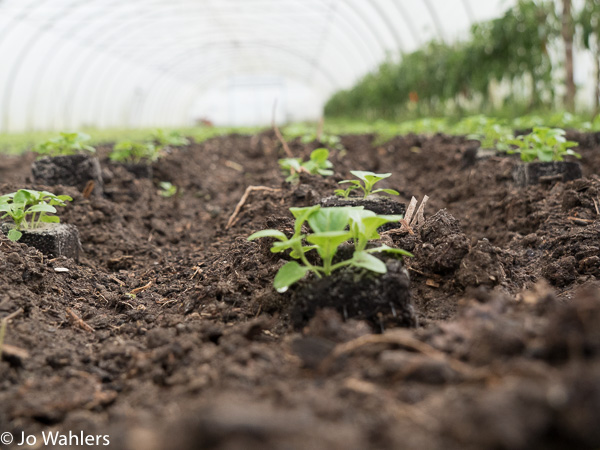
Aber ist das wirklich so? Ich habe mich auf ein Feld begeben, um mich mit Jochen Voigt über Boden zu unterhalten. Jochen hat bereits 1989 einen Bio-Gemüsebetrieb mit Direktvermarktung in Syke-Gessel gegründet, was damals noch eine Seltenheit war. 2001 schloss er sich mit Heinz-Jürgen Michel zusammen, der in Oldenburg den Bio-Lieferkistenservice „frischeKiste“ gegründet hat, den sie dann in Syke ansiedelten. Inzwischen haben sie rund 33 Mitarbeitende und liefern wöchentlich rund 1300 Kisten an Kundinnen und Kunden sowie zahlreiche Schulen im Großraum Bremen aus.
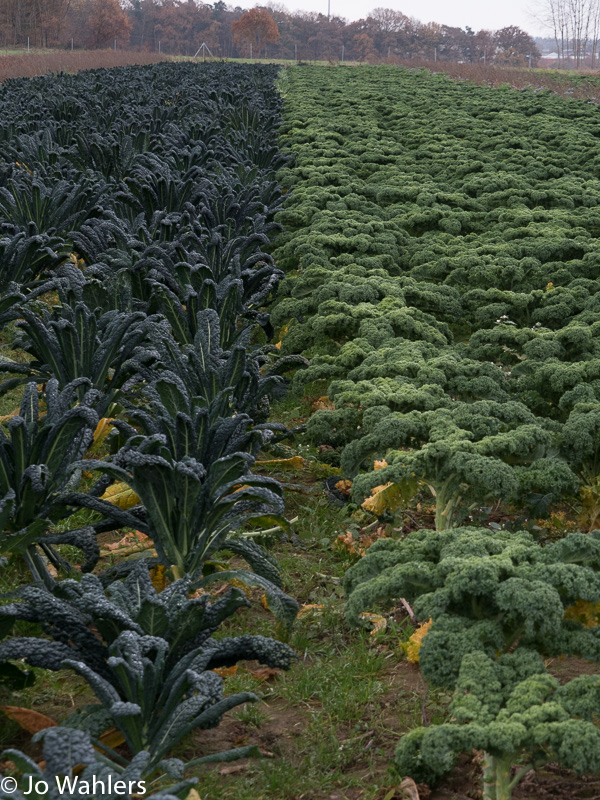
Jochen ist dabei wichtig, dass bei dem Gemüse, was sie verkaufen, ein Anteil aus eigenem Anbau stammt. 2016 pachteten sie eine 5,85 ha große Anbaufläche in Syke-Leerßen hinzu. Nach der zweijährigen Umstellungszeit von konventionellem zu biologischem Anbau nutzen sie diese jetzt für den Gemüseanbau. Ungefähr 10% des Gemüses können sie dadurch heute aus eigenem Anbau anbieten.
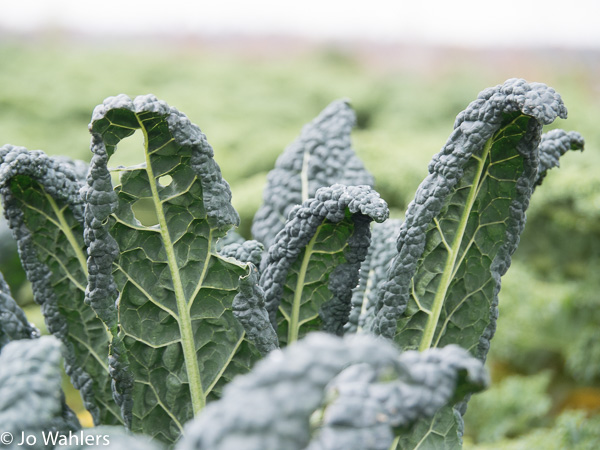
Auf diesem Feld stehen wir nun. Es ist kalt, als wir auf das umzäunte Areal gehen. Und ich wundere mich als Erstes über die ungewöhnliche Aufteilung der Felder. Anstatt der üblichen großen einheitlichen Fläche, wird hier mit langen schmalen Streifen gearbeitet, auf denen unterschiedliche Gemüsearten nebeneinander angepflanzt werden. Die Fruchtfolge wandert dann nach und nach von rechts nach links. Zwischendurch wird immer wieder Klee zur Bodendüngung gepflanzt, der Stickstoff aus der Luft im Boden bindet. Das meiste ist jetzt im beginnenden Winter bereits geerntet, aber auf einem Feld stehen Reihen von stattlichen Grünkohlpflanzen. Es sieht aus wie ein Wald für Zwerge. Neben dem Grünkohl ist ein Streifen mit verblühten Blumen. Jochen erklärt: Das ist ein Blühstreifen mit der sogenannten Hannover-Mischung. Sie soll gegen eine Fliege helfen, die den Grünkohl befallen kann. Beim Verband Bioland gibt es versierte Berater, die immer gute Tipps und neue Ideen haben. Und auch unter Kolleginnen und Kollegen würden sie sich austauschen, so Jochen. Denn Bio-Landwirtschaft ist auch Trial-and-Error und viel ausprobieren. Dazu zählt, mit dem Boden zu arbeiten und nicht gegen ihn. Das erfordert viel Kenntnis und Sensibilität, da die Bodenbeschaffenheit wenige Flurstücke weiter schon ganz anders sein kann.
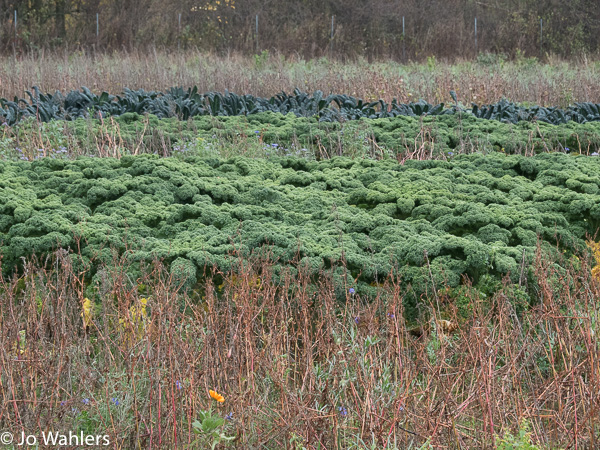
Das sehe ich, als wir später zu einem anderen Stück Land fahren, was zur frischeKiste gehört: Oben bei der Gemüsefläche war es ein lehmiger Boden und hier unten ist plötzlich lockere dunkle Erde.
Auch wenn er und seine zwei Kolleginnen, mit denen er den Anbau verantwortet (eine davon seine Tochter), noch mittendrin sind in der Ausweitung des eigenen Anbaus, so ist Jochen gedanklich bereits einen Schritt weiter. „Ich habe mich in letzter Zeit viel mit der Historie und den Grundprinzipien der Landwirtschaft beschäftigt und aus meiner Sicht, machen die Monokulturen keinen Sinn mehr und haben eigentlich auch nie Sinn gemacht“. Eine Vielfalts-Kultur mit verschiedenen Früchten, Sträuchern und Bäumen auf einer Fläche erbringe in der Summe höhere Erträge, auch wenn die Erträge der einzelnen Kulturen geringer sind. Sie sei stabiler, widerstandsfähiger und viel schöner als eine Monokultur von z.B. Getreide oder Kartoffeln. Die positiven Effekte von Symbiosen können gut genutzt werden.
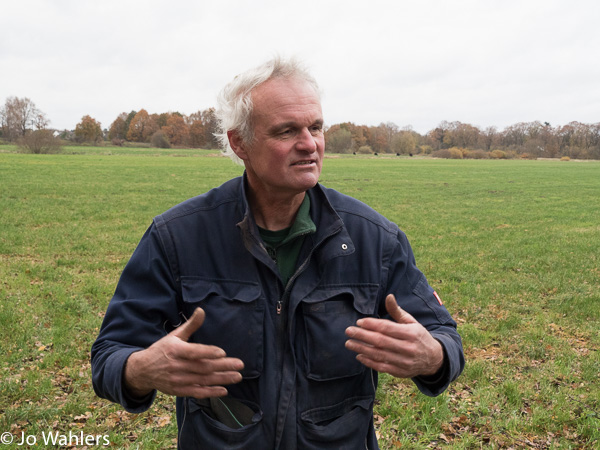
Ich bin doch überrascht, denn schließlich kenne ich keine andere Art von Landwirtschaft als riesige Weizen-, Mais- oder Kohlfelder. Was soll denn die Alternative sein, frage ich ihn? Jochen Voigt: „Ich stelle mir eine Art Waldgarten vor – also ein Agroforst-System. D.h. es werden erstmal Bäume, Baumreihen, Sträucher und Stauden gepflanzt. Dazwischen können wir zunächst ganz normal weiterwirtschaften. Nach einigen Jahren gehen dann die zusätzlichen Erträge los, wie Obst, Beeren, Nüsse u.a. Wir könnten diese wie bisher über die frischeKISTE in die Stadt bringen. Oder wir versuchen, ein System von Solidarischer Landwirtschaft zu entwickeln, in dem die Leute mitmachen und ihren Bedarf selbst ernten können. Natürlich könnte man auch Überschüsse an den Großhandel geben. Das muss aber immer mit großer Wertschätzung und fairen Preisen verbunden sein. Stadtferne Regionen müssen auch in Zukunft über ein Handelssystem die Leute in den Städten versorgen. Die Aufgabe ist, alle Menschen zu ernähren, dabei gleichzeitig den ökologischen Zustand der Landschaft zu verbessern und den Verschleiß fossiler Ressourcen zu reduzieren. Die Wasserversorgung muss stabilisiert werden, Abfälle müssen reduziert und schadlos recycelt werden. Das Land soll dann auch noch zur Erholung und Freizeitnutzung der Städter:innen dienen.“
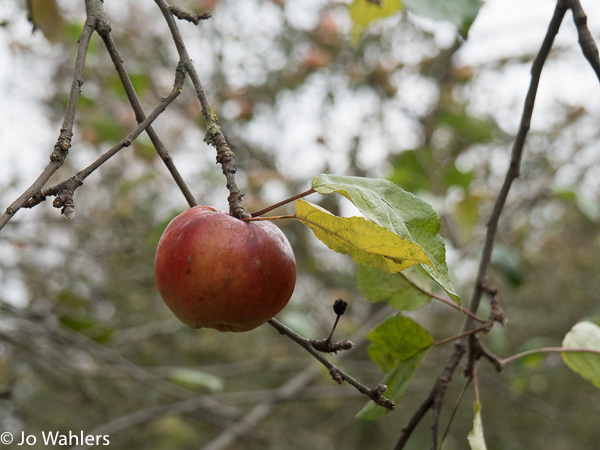
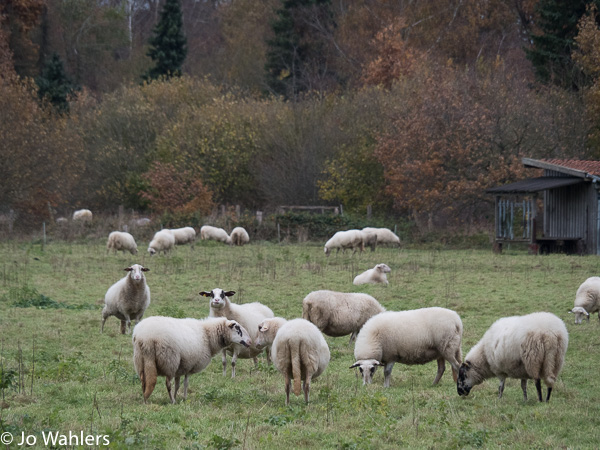
Wir laufen gerade zu den Schafen, die friedlich zwischen einem Bach und Bäumen grasen. Ein Waldgarten klingt schön, finde ich. Wobei mir mit einem Blick auf unser gängiges Konsumverhalten klar ist, dass es ein dickes Brett ist, was es zu bohren gilt, bevor wir in der Landwirtschaft so weit umdenken. Wie so oft, bestimmen auch wir als Verbraucherinnen und Verbraucher diesen Prozess wesentlich mit. Dazu gehört, bequeme Gewohnheiten zu überdenken, wie Obst und Gemüse, was jahreszeitlich unabhängig zu Verfügung zu stehen hat, oder das ganze Convenience Food.
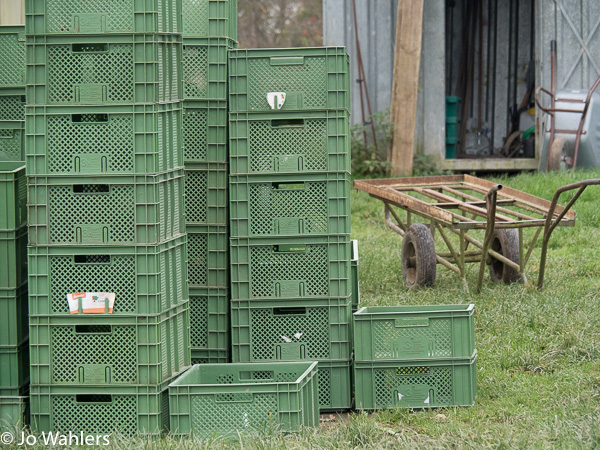

Dazu kommt, dass aktuell überhaupt einmal gerade 9,6 % der gesamten landwirtschaftlich genutzten Fläche ökologisch bewirtschaftet wird (Quelle: Umweltbundesamt https://www.umweltbundesamt.de/daten/land-forstwirtschaft/oekologischer-landbau#okolandbau-in-deutschland). Erstmal muss hier ein weiteres Umdenken stattfinden und es den Höfen möglich gemacht werden, auf Bio umzustellen. Die breite Akzeptanz, dann noch ein paar Schritte weiter zu denken und auf Misch-Anbau zu setzen, wird sicher viel Überzeugungsarbeit bedeuten und eine Veränderung in unser aller Köpfe nötig machen.
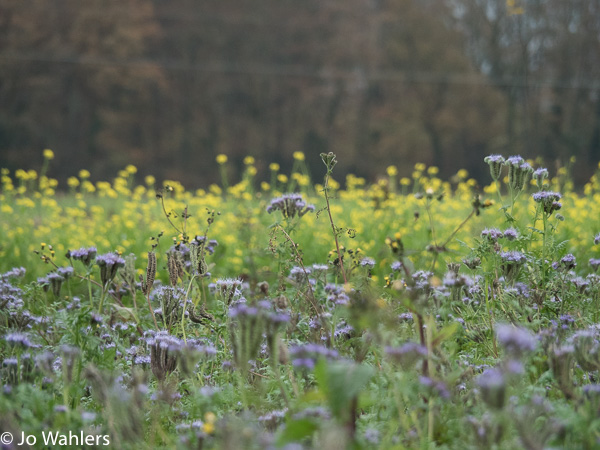
Umso wichtiger sind Menschen, wie Jochen, die Systeme hinterfragen und den Mut haben, neue Wege zu gehen. Seine Begeisterung für die Natur und den Boden ist auf jeden Fall ansteckend:
„Es geht um die Pflanzen und die Pflege der Flächen, den Rest besorgt die Natur dann ganz von selbst. Auch beim Boden ist es mir wichtig, ihn nicht nur als Fläche, sondern als dreidimensionalen Raum mit großer Tiefe zu begreifen, und die unendlich komplexen Systeme und Lebensgemeinschaften, die darin wirken, wenigstens ansatzweise zu verstehen.“

Jochen Voigt freut sich über Fragen und Diskussionsbeiträge an seine Mailadresse jochen@frischekiste.de
Die Fotografin
Die wunderbaren stimmungsvollen Fotos hat meine Freundin und Kollegin Jo Wahlers gemacht, mit der ich bereits einige Kreativ-Workshops und Ausstellungen gemeinsam veranstaltet habe. Jo ist Ärztin und Künstlerin. Mehr zu ihren Arbeiten unter www.jowahlers.de.
Impact area soil – sustainable agriculture
Visit to the vegetable field
When we think of space, we usually think of built-up areas. Of our homes, office buildings or maybe even public places like a market place or the train station. But underneath all this built-up space is one thing: the ground. I imagine it like a jigsaw puzzle: piece by piece, the open ground is distributed and puzzled over. With concrete, asphalt and also with agriculture. The latter, after all, leaves the soil free and uses the earth without building it up.
But is that really the case? I went to a field to talk to Jochen Voigt about soil. Jochen founded an organic vegetable farm with direct marketing in Syke-Gessel back in 1989, which was still a rarity back then. In 2001 he joined forces with Heinz-Jürgen Michel, who founded the organic delivery box service „frischeKiste“ in Oldenburg, which they then established in Syke. They now have around 33 employees and deliver around 1,300 boxes a week to customers and numerous schools in the greater Bremen area.
It is important to Jochen that a portion of the vegetables they sell comes from their own cultivation. In 2016, they leased a 5.85 ha cultivation area in Syke-Leerßen. After the two-year conversion period from conventional to organic farming, they are now using it to grow vegetables. As a result, they can now offer about 10% of their vegetables from their own cultivation.
We are now standing on this field. It is cold when we enter the fenced area. And the first thing that surprises me is the unusual layout of the fields. Instead of the usual large uniform area, here they work with long narrow strips on which different types of vegetables are planted next to each other. The crop rotation then gradually moves from right to left. In between, clover is planted again and again for soil fertilisation, which binds nitrogen from the air in the soil. Most of the crops have now been harvested as winter sets in, but in one field there are rows of stately kale plants. It looks like a forest for dwarves. Next to the kale is a strip of faded flowers. Jochen explains: „This is a flowering strip with the so-called Hanover mixture. It is supposed to help against a fly that can infest the kale. The Bioland association has experienced advisors who always have good tips and new ideas. And they would also exchange ideas among colleagues, says Jochen. Because organic farming is also trial-and-error and a lot of trying out. This includes working with the soil and not against it. This requires a lot of knowledge and sensitivity, as the soil conditions a few plots away can be completely different.
I see this when we later drive to another piece of land that belongs to the frischeKiste: up at the vegetable plot it was a loamy soil and down here there is suddenly loose dark earth.
Even though he and his two colleagues with whom he is responsible for the cultivation (one of them his daughter) are still in the middle of expanding their own cultivation, Jochen is already one step further in his thoughts. „Recently, I have been studying the history and basic principles of agriculture a lot, and from my point of view, monocultures no longer make sense and have never made sense. A diverse crop with different fruits, shrubs and trees on one area yields higher yields in total, even if the yields of the individual crops are lower. It is more stable, more resistant and much more beautiful than a monoculture of e.g. cereals or potatoes. The positive effects of symbioses can be put to good use.
I am surprised, because I don’t know any other kind of agriculture than huge fields of wheat, maize or cabbage. What should the alternative be, I ask him? Jochen Voigt: „I imagine a kind of forest garden – an agroforestry system. That is, trees, rows of trees, shrubs and perennials are planted first. In between, we can continue to farm normally. After a few years, the additional yields will start, such as fruit, berries, nuts, etc. We could bring these into the city via the frischeKISTE as before. Or we could try to develop a system of solidarity farming where people can join in and harvest their own needs. Of course, we could also give surpluses to wholesalers. But that must always be linked to great appreciation and fair prices. Regions far from the cities must continue to supply the people in the cities through a trading system. The task is to feed all people, while at the same time improving the ecological condition of the landscape and reducing the depletion of fossil resources. The water supply must be stabilised, waste must be reduced and recycled without harm. The land should then also be used for recreation and leisure for city dwellers.“
We are walking towards the sheep grazing peacefully between a stream and trees. A forest garden sounds nice, I think. Although, with one look at our current consumer behaviour, it is clear to me that it is a thick board that needs to be drilled before we rethink agriculture to such an extent. As is so often the case, we as consumers also play a major role in determining this process. This includes rethinking comfortable habits, such as fruit and vegetables, which have to be available regardless of the season, or all the convenience food.
In addition, only 9.6 % of all agricultural land is currently farmed organically (source: Federal Environment Agency https://www.umweltbundesamt.de/daten/land-forstwirtschaft/oekologischer-landbau#okolandbau-in-deutschland). First of all, there has to be a further change in thinking and it has to be made possible for farms to convert to organic farming. The broad acceptance to then think a few steps further and to rely on mixed cultivation will certainly require a lot of persuasion and a change in all our minds.
All the more important are people like Jochen who question systems and have the courage to go new ways. His enthusiasm for nature and the soil is definitely contagious:
„It’s all about the plants and the care of the land, and then nature takes care of the rest all by itself. With soil, too, it’s important to me to understand it not just as a surface, but as a three-dimensional space with great depth, and to understand, at least to some extent, the infinitely complex systems and biotic communities at work in it.“
Jochen Voigt welcomes questions and contributions to the discussion at his email address jochen@frischekiste.de.
The photographer
The wonderful atmospheric photos were taken by my friend and colleague Jo Wahlers, with whom I have already organised several creative workshops and exhibitions together. Jo is a doctor and artist. Read more about her work at www.jowahlers.de.
Author: Maike Kristina Harich
